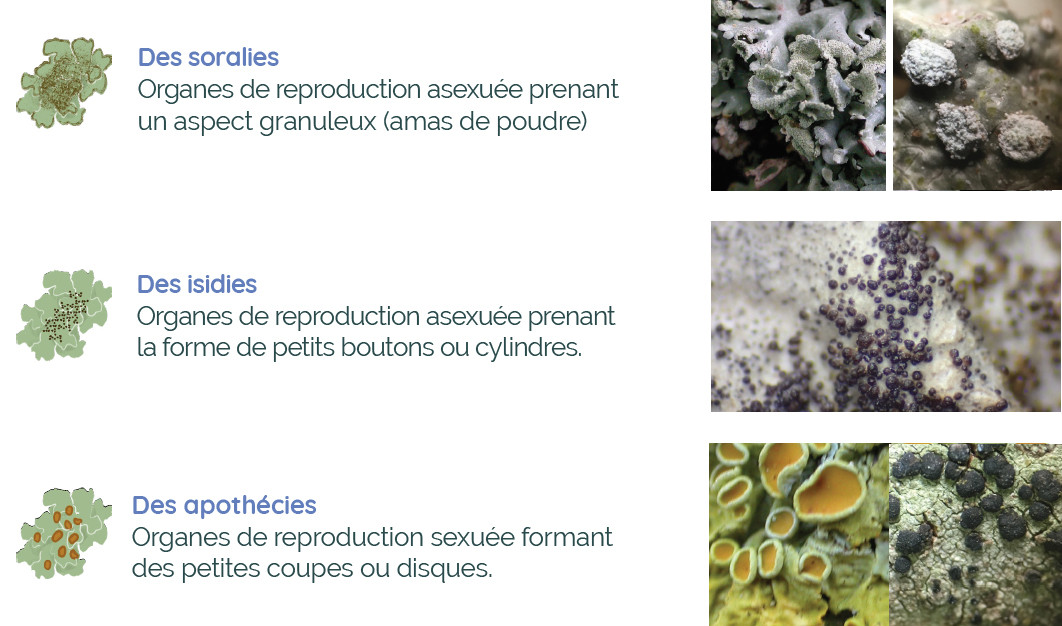Diversified modes of reproduction to maximise chances
Lichens are able to multiply by cloning (when a fragment breaks off from the rest and falls into a favourable environment). However, the success of this type of reproduction depends on external and random factors (e.g. if it is trampled). Lichens are also able to reproduce thanks to asexual reproductive organs, the soralies or isidia, which form cuttings on the surface, but also thanks to sexual organs in the lichen fungus. The latter produce spores that are dispersed and may find an alga to settle with.
Lichens adopt different strategies to reproduce. When a fragment of a lichen is separated from the rest, it can under favourable conditions continue to grow and form a new lichen. This is called vegetative propagation. The lichen produced is identical to the parent, it is a clone. This happens when terricolous lichens are trampled, for example. However, this method of propagation depends on external and random factors, and is not the most efficient. For example, it is not possible to predict when an animal will pass by, trample on or tear off a piece of the lichen, and where this piece will land.
To compensate for this, lichens also produce cuttings on the surface of the thallus, which will easily detach from the lichen when dry and which contain algal and fungal cells. In some lichens, these cuttings are called soralies: they have a granular appearance. These are tears in the surface of the lichen, through which a mixture of algal and fungal cells emerge: the soriates. In other lichens, when these cuttings have the shape of small buttons or cylinders, they are called isidia.
Sori and isidia are asexual reproductive organs, but lichen fungi also use sexual reproduction, thanks to sexual reproductive organs: the apothecia. These are shaped like small cups or discs. They are the site of sexual reproduction of the fungus, which produces spores. This time, the individuals born are not clones but a unique mixture between their parents: this is genetic mixing. In most lichen fungi, spores are produced in sacs called asci. They are produced by the fusion of parts of the two parent fungi. These spores are then released and can disperse. The luckiest ones can form a new symbiosis with algae, resulting in a new lichen.

